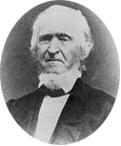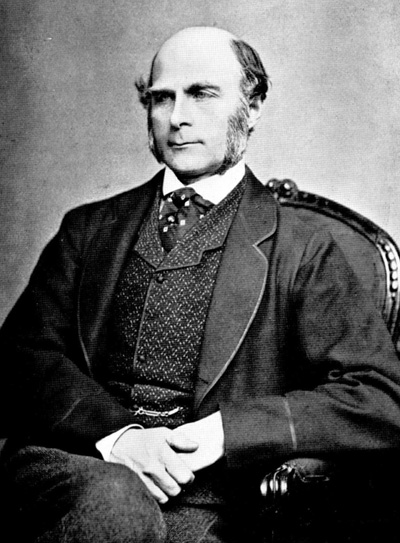|
C. C. Little
Clarence Cook Little (October 6, 1888 – December 22, 1971) was an American genetics, cancer, and tobacco researcher and academic administrator, as well as a eugenicist. Early life C. C. Little was born in Brookline, Massachusetts and attended Harvard University after his secondary education at the Noble and Greenough School. Little received an A.B. from Harvard University in 1910, an M.S. in 1912, and D.Sc. in 1914 in zoology, with special focus in the new science of genetics. During World War I, Little served in the U.S. Army Signal Corps, attaining the rank of Major. Following the war he spent three years at the Cold Spring Harbor Laboratory. In 1921, he helped found the American Birth Control League with Margaret Sanger and Lothrop Stoddard. Career While studying under W. E. Castle, Little began his work with mice, focusing on inheritance, transplants, and grafts. He also was an assistant dean and secretary to the president. In 1921, he inbred the mouse strain C57BL/6 or ... [...More Info...] [...Related Items...] OR: [Wikipedia] [Google] [Baidu] |
President Of The University Of Michigan
The president of the University of Michigan is a constitutional officer who serves as the principal executive officer of the University of Michigan. The president is chosen by the Board of Regents of the University of Michigan, as provided for in the Constitution of the State of Michigan. Fifteen people—fourteen men and one woman—have held the office, in addition to several others who have held it in either an acting or interim capacity. The University of Michigan's current president is Santa Ono, formerly the president of the University of British Columbia in Canada. He took office on 14 October 2022. History The office was created by the Michigan Constitution of 1850, which also specified that the president was to be appointed by the Regents of the University of Michigan and preside at their meetings, but without a vote., Article 13, section 8 The precise wording has evolved through subsequent state constitutions, and as of November 2018 the office is defined ... [...More Info...] [...Related Items...] OR: [Wikipedia] [Google] [Baidu] |
American Birth Control League
The American Birth Control League (ABCL) was founded by Margaret Sanger in 1921 at the First American Birth Control Conference in New York City. The organization promoted the founding of birth control clinics and encouraged women to control their own fertility. In 1942, the league became the Planned Parenthood Federation of America. History The League was founded by Margaret Sanger in 1921, and incorporated under the laws of New York State on April 5, 1922. Birth Control Leagues had already been formed in a number of larger American cities between 1916 and 1919 due to Sanger's lecture tours and the publication of the Birth Control Review. By 1924, the American Birth Control League had 27,500 members, with ten branches maintained in Pennsylvania, Ohio, Indiana, Michigan, Massachusetts, Connecticut, Colorado, and British Columbia. In June 1928, Margaret Sanger resigned as president of the American Birth Control League, founding the National Committee on Federal Legislation for B ... [...More Info...] [...Related Items...] OR: [Wikipedia] [Google] [Baidu] |
Eugenics
Eugenics ( ; ) is a fringe set of beliefs and practices that aim to improve the genetic quality of a human population. Historically, eugenicists have attempted to alter human gene pools by excluding people and groups judged to be inferior or promoting those judged to be superior. In recent years, the term has seen a revival in bioethical discussions on the usage of new technologies such as CRISPR and genetic screening, with a heated debate on whether these technologies should be called eugenics or not. The concept predates the term; Plato suggested applying the principles of selective breeding to humans around 400 BC. Early advocates of eugenics in the 19th century regarded it as a way of improving groups of people. In contemporary usage, the term ''eugenics'' is closely associated with scientific racism. Modern bioethicists who advocate new eugenics characterize it as a way of enhancing individual traits, regardless of group membership. While eugenic principles have be ... [...More Info...] [...Related Items...] OR: [Wikipedia] [Google] [Baidu] |
University Of Michigan
, mottoeng = "Arts, Knowledge, Truth" , former_names = Catholepistemiad, or University of Michigania (1817–1821) , budget = $10.3 billion (2021) , endowment = $17 billion (2021)As of October 25, 2021. , president = Santa Ono , provost = Laurie McCauley , established = , type = Public research university , academic_affiliations = , students = 48,090 (2021) , undergrad = 31,329 (2021) , postgrad = 16,578 (2021) , administrative_staff = 18,986 (2014) , faculty = 6,771 (2014) , city = Ann Arbor , state = Michigan , country = United States , coor = , campus = Midsize City, Total: , including arboretum , colors = Maize & Blue , nickname = Wolverines , sporti ... [...More Info...] [...Related Items...] OR: [Wikipedia] [Google] [Baidu] |
Bar Harbor, Maine
Bar Harbor is a resort town on Mount Desert Island in Hancock County, Maine, United States. As of the 2020 census, its population is 5,089. During the summer and fall seasons, it is a popular tourist destination and, until a catastrophic fire in 1947, the town was a noted summer colony for the wealthy. The town is home to the College of the Atlantic, Jackson Laboratory and MDI Biological Laboratory. Bar Harbor is also home to the largest parts of Acadia National Park, including Cadillac Mountain, the highest point within of the coastline of the eastern United States. From the mainland, Bar Harbor is accessible by road via Maine State Route 3, by air at Hancock County–Bar Harbor Airport, and by ferry from Winter Harbor, Maine, and Yarmouth, Nova Scotia. History The town of Bar Harbor was founded on the northeast shore of Mount Desert Island, which the Wabanaki Indians knew as ''Pemetic'', meaning "range of mountains" or "mountains seen at a distance." The Wabanaki sea ... [...More Info...] [...Related Items...] OR: [Wikipedia] [Google] [Baidu] |
William B
William is a male given name of Germanic origin.Hanks, Hardcastle and Hodges, ''Oxford Dictionary of First Names'', Oxford University Press, 2nd edition, , p. 276. It became very popular in the English language after the Norman conquest of England in 1066,All Things William"Meaning & Origin of the Name"/ref> and remained so throughout the Middle Ages and into the modern era. It is sometimes abbreviated "Wm." Shortened familiar versions in English include Will, Wills, Willy, Willie, Bill, and Billy. A common Irish form is Liam. Scottish diminutives include Wull, Willie or Wullie (as in Oor Wullie or the play ''Douglas''). Female forms are Willa, Willemina, Wilma and Wilhelmina. Etymology William is related to the given name ''Wilhelm'' (cf. Proto-Germanic ᚹᛁᛚᛃᚨᚺᛖᛚᛗᚨᛉ, ''*Wiljahelmaz'' > German ''Wilhelm'' and Old Norse ᚢᛁᛚᛋᛅᚼᛅᛚᛘᛅᛋ, ''Vilhjálmr''). By regular sound changes, the native, inherited English form of the name should b ... [...More Info...] [...Related Items...] OR: [Wikipedia] [Google] [Baidu] |
Strain (biology)
In biology, a strain is a genetic variant, a subtype or a culture within a biological species. Strains are often seen as inherently artificial concepts, characterized by a specific intent for genetic isolation. This is most easily observed in microbiology where strains are derived from a single cell colony and are typically quarantined by the physical constraints of a Petri dish. Strains are also commonly referred to within virology, botany, and with rodents used in experimental studies. Microbiology and virology It has been said that "there is no universally accepted definition for the terms 'strain', ' variant', and 'isolate' in the virology community, and most virologists simply copy the usage of terms from others". A strain is a genetic variant or subtype of a microorganism (e.g., a virus, bacterium or fungus). For example, a "flu strain" is a certain biological form of the influenza or "flu" virus. These flu strains are characterized by their differing isoforms of su ... [...More Info...] [...Related Items...] OR: [Wikipedia] [Google] [Baidu] |
George Davis Snell
George Davis Snell NAS (December 19, 1903 – June 6, 1996) was an American mouse geneticist and basic transplant immunologist. Work George Snell shared the 1980 Nobel Prize in Physiology or Medicine with Baruj Benacerraf and Jean Dausset for their discoveries concerning "genetically determined structures on the cell surface that regulate immunological reactions". Snell specifically "discovered the genetic factors that determine the possibilities of transplanting tissue from one individual to another. It was Snell who introduced the concept of H antigensSnell's work in mice led to the discovery of Human leukocyte antigen, HLA, the major histocompatibility complex, in humans (and all vertebrates) that is analogous to the H-2 complex in mice. Recognition of these key genes was prerequisite to successful tissue and organ transplantation. Life George Snell was born in Bradford, Massachusetts, the youngest of three children. His father (who was born in Minnesota) worked as a ... [...More Info...] [...Related Items...] OR: [Wikipedia] [Google] [Baidu] |
Gregor Mendel
Gregor Johann Mendel, Augustinians, OSA (; cs, Řehoř Jan Mendel; 20 July 1822 – 6 January 1884) was a biologist, meteorologist, mathematician, Augustinians, Augustinian friar and abbot of St Thomas's Abbey, Brno, St. Thomas' Abbey in Brünn (''Brno''), Margraviate of Moravia. Mendel was born in a Sudeten Germans, German-speaking family in the Austrian Silesia, Silesian part of the Austrian Empire (today's Czech Republic) and gained posthumous recognition as the founder of the modern science of genetics. Though farmers had known for millennia that crossbreeding of animals and plants could favor certain desirable trait (biological), traits, Mendel's pea plant experiments conducted between 1856 and 1863 established many of the rules of biological inheritance, heredity, now referred to as the laws of Mendelian inheritance. Mendel worked with seven characteristics of pea plants: plant height, pod shape and color, seed shape and color, and flower position and color. Taking seed ... [...More Info...] [...Related Items...] OR: [Wikipedia] [Google] [Baidu] |
Laboratory Mouse
The laboratory mouse or lab mouse is a small mammal of the order Rodentia which is bred and used for scientific research or feeders for certain pets. Laboratory mice are usually of the species ''Mus musculus''. They are the most commonly used mammalian research model and are used for research in genetics, physiology, psychology, medicine and other scientific disciplines. Mice belong to the Euarchontoglires clade, which includes humans. This close relationship, the associated high homology with humans, their ease of maintenance and handling, and their high reproduction rate, make mice particularly suitable models for human-oriented research. The laboratory mouse genome has been sequenced and many mouse genes have human homologues. Other mouse species sometimes used in laboratory research include two American species, the white-footed mouse (''Peromyscus leucopus'') and the North American deer mouse (''Peromyscus maniculatus''). History as a biological model Mice have been ... [...More Info...] [...Related Items...] OR: [Wikipedia] [Google] [Baidu] |
C57BL/6
C57BL/6, often referred to as "C57 black 6", "C57" or "black 6", is a common inbred strain of laboratory mouse. It is the most widely used "genetic background" for genetically modified mice for use as models of human disease. They are the most widely used and best-selling mouse strain, due to the availability of congenic strains, easy breeding, and robustness. Origin The inbred strain of C57BL mice was created in 1921 by C. C. Little at the Bussey Institute for Research in Applied Biology. The substrain "6" was the most popular of the surviving substrains. Little's supervisor William E. Castle had obtained the predecessor strain of C57BL/6, "mouse number 57", from Abbie Lathrop who was breeding inbred strains for mammary tumor research in collaboration with Leo Loeb at the time. Appearance and behavior C57BL/6 mice have a dark brown, nearly black coat. They are more sensitive to noise and odours and are more likely to bite than the more docile laboratory strains such as BA ... [...More Info...] [...Related Items...] OR: [Wikipedia] [Google] [Baidu] |




